 All right, I know a lot of you don’t pay too much attention to French guns but that makes this guide all the handier! The Chassepot and Gras are kissing cousins, so it’s easiest to list them together. Hopefully this list will help sort out these extremely similar rifles.
All right, I know a lot of you don’t pay too much attention to French guns but that makes this guide all the handier! The Chassepot and Gras are kissing cousins, so it’s easiest to list them together. Hopefully this list will help sort out these extremely similar rifles.
Infantry Rifle 1866
Fusil Modèle 1866

| Length | 51.4″ | Barrel Length | 31.7″ | Weight | 9.0 lbs | Cartridge | 11mm Paper |
|---|
With breech loading rifles becoming standard in warfare, the French turned to Antoine Chassepot’s bolt action rifle for broad adoption. This early design uses a needle-fire system to pierce a paper cartridge and seals with a rubber ring. These were the standard arm of the Franco-Prussian War and, with modification, would stay on the battlefield through WWI!
These were fitted with a saber bayonet just like the Remington’s with a 22.5″ blade.
Rifle 1866 for African Cavalry
Fusil Modèle 1866 pour la Cavalerie

| Length | 51.4″ | Barrel Length | 31.7″ | Weight | 9.0 lbs | Cartridge | 11mm Paper |
|---|
This modified rifle was never an official design but was made and issued in significant numbers. These were conversions of the original 1866 for mounted troops in the colonies, particularly Africa. The most outstanding feature is that the rear sling swivel was moved to in front of the trigger guard with a cross piece fitted into the stock to retain it.
It uses the same 1866 saber bayonet.
Cavalry Carbine 1866
Carabine de Cavalerie Modèle 1866
| Length | 46.3″ | Barrel Length | 27.6″ | Weight | 7.7 lbs | Cartridge | 11mm Paper |
|---|
An official shortened Chassepot for mounted use. Features a sling point in the trigger guard and does not fit a bayonet. This is because the cavalry would already have swords.
Mounted Gendarmes Carbine 1866
Carabine de Gendarmerie a Cheval Modèle 1866

| Length | 46.3″ | Barrel Length | 27.6″ | Weight | 7.8 lbs | Cartridge | 11mm Paper |
|---|
This carbine is actually identical to the cavalry model. Really, no difference that we can find. Except it was issued with a cruciform socket bayonet.
There are likely serial ranges to these guns but unfortunately we were unable to find any just yet. So we really don’t know just how to distinguish it from the cavalry.
Gendarmes Carbine 1866
Carabine de Gendarmerie a Pied Modèle 1866

| Length | 46.3″ | Barrel Length | 27.6″ | Weight | 7.8 lbs | Cartridge | 11mm Paper |
|---|
Same length and rough weight as the previous model, this was reworked for military police units who didn’t get any horses. The fittings are slightly changed but the big difference is that this model does not take a socket bayonet, rather the 1866 sabre model instead.
Artillery Musketoon 1866
Mousqueton d’Artillerie Modèle 1866

| Length | 39″ | Barrel Length | 20.1″ | Weight | 7 lbs | Cartridge | 11mm Paper |
|---|
Further modification of the Gendarmes Carbine, this is an even shorter and handier gun for use by artillery and other specialty troops. Again, it features a bayonet mount for the 1866 sabre. This is a particularly rare model as fewer were made before the jump to the 1874.
Infantry Rifle 1874
Fusil Modèle 1874

| Length | 51.4″ | Barrel Length | 32.3″ | Weight | 9.3 lbs | Cartridge | 11x59mmR |
|---|
In response to the German adoption of the metallic cartridge firing Mauser 1871, the French took up the work of Basile Gras to upgrade the Chassepot. This new “Gras” rifle was much the same, although now firing an 11mm metallic cartridge with the help of an improved bolt.
Infantry Rifle 1866-74
Fusil Modèle 1866-74
| Length | 51.4″ | Barrel Length | 32.3″ | Weight | 9.3 lbs | Cartridge | 11x59mmR |
|---|
The 1874 rifle was designed from the notion that the existing Chassepot rifles could be converted and so they were. After being worked over, these are nearly identical to the Model 1874’s and so only the markings on the left rail tell the difference. This is applied to all models of rifles, carbines, and musketoons.
There are two variations, the “Model T” which used a sleeved barrel and the “Model N” which receive a new-made barrel. These were paired with either the new 1874 bayonet or the old 1866, which are interchangeable.
Cavalry Carbine 1874
Carabine de Cavalerie Modèle 1874

| Length | 46.3″ | Barrel Length | 27.6″ | Weight | 7.8 lbs | Cartridge | 11x59mmR |
|---|
The French enjoyed their Cavalry, Mounted Police, Foot Police, and Artillery versions of the Chassepot and kept them on the Gras. So this is the equivalent Cavalry Carbine. While most of these will be near-identical outside of the bolt, this carbine actually has a slightly different front band from its precursor.
Again, no bayonet was provided with this model.
Cavalry Carbine 1866-74
Carabine de Cavalerie Modèle 1866-74

| Length | 46.3″ | Barrel Length | 27.6″ | Weight | 7.8 lbs | Cartridge | 11x59mmR |
|---|
All of these 1866-74 variations will be very hard to tell from the 1874 versions without close inspection. Luckily the French were great about marking them down the left side of the receiver. This updated carbine mirrors the one above.
Mounted Gendarmes Carbine 1874
Carabine de Gendarmerie a Cheval Modèle 1874

| Length | 46.3″ | Barrel Length | 27.6″ | Weight | 7.9 lbs | Cartridge | 11x59mmR |
|---|
The mounted police refreshed their carbine. Again it was fitted with the cruciform bayonet but this time the blade sits on the other side of the rifle. Not entirely sure what the reason was for the change.
Mounted Gendarmes Carbine 1866-74
Carabine de Gendarmerie a Cheval Modèle 1866-74

| Length | 46.3″ | Barrel Length | 27.6″ | Weight | 7.9 lbs | Cartridge | 11x59mmR |
|---|
Not a lot to cover here, another 1866 updated to mirror the carbine above. Check the markings on the left of the receiver.
Gendarmes Carbine 1874
Carabine de Gendarmerie a Pied Modèle 1874

| Length | 46.3″ | Barrel Length | 27.6″ | Weight | 7.9 lbs | Cartridge | 11x59mmR |
|---|
Police on foot received the same pattern gun all over again with an improved Gras action. These guns were not paired with the new 1874 bayonet and retained the 1866 sabers.
Gendarmes Carbine 1866-74
Carabine de Gendarmerie a Pied Modèle 1866-74

| Length | 46.3″ | Barrel Length | 27.6″ | Weight | 7.9 lbs | Cartridge | 11x59mmR |
|---|
An updated Chassepot to mirror the gun above. Check the receiver markings.
Artillery Musketoon 1874
Mousqueton d’Artillerie Modèle 1874

| Length | 39″ | Barrel Length | 20.1″ | Weight | 7.2 lbs | Cartridge | 11x59mmR |
|---|
Once more, the Artillery troops took up the handiest sized rifle. These musketoons were just as before but with the improved Gras action. They also retained the 1866 saber bayonet.
Artillery Musketoon 1866-74
Mousqueton d’Artillerie Modèle 1866-74

| Length | 39″ | Barrel Length | 20.1″ | Weight | 7.2 lbs | Cartridge | 11x59mmR |
|---|
The pattern should be apparent by now. This is just a Chassepot reworked to clone the model above.
Modification of 1880
The updated Chassepot and Gras rifles had one major problem: poor gas mitigation. Ruptured casings were causing major issues for shooters and so in 1880 a fresh channel was made in the bolt to help remedy the situation. Model 1874 or 1866-74’s will be marked “M80” on the left of the receiver if updated to this pattern.
Rifle Modification of 1914
Fusil Modèle 1874 M80 M14

| Length | 51.4″ | Barrel Length | 31.7″ | Weight | ? | Cartridge | 8x50mmR |
|---|
Shortages early in WWI made the French desperate for weapons chambering the standard 8mm cartridge. The 11mm barrels were replaced but the slightly modified actions remained single-shot shoulder lockers. In order to allow the continued use of both the 1866 and 1874 bayonets, a sleeve was made from the original barrel and sits over the new one until the base of the forward barrel band.
Now, donor models for this conversion included the 1866-74, 1866-74 M80, 1874, and 1874 M80, so markings may vary! Amazingly these guns remained in storage into the 1930’s as some have been noted with updated “N” stampings for the improved 8mm cartridge and parkerizing/black paint finish!
German Modified Carbine 1871
Aptierter Chassepot-Karabiner Modell 1871

| Length | 39.2″ | Barrel Length | 20.5″ | Weight | 7.8 lbs | Cartridge | 11×60mm |
|---|
During the Franco-Prussian War the Dreyse needle rifle was showing some limitations. Prussian Cavalry were actually favoring captured French carbines and were even shortening French long rifles and using captured ammo. Shortly after, the adoption of the 1871 Mauser was moving quickly, but no where near quick enough for arsenals to provide a standard carbine on the action. So the Prussians turned, again, to the Chassepot.
In 1874 they began boring and sleeving the barrels in 11mm Mauser and modifying the actions to metallic fire. The guns were shortened and fitted with a snub-nose cap. These were issued widely to cavalry and as 1871 carbines became available they were pushed further down the line of special units, ultimately ending up with the Landstrum last.

C&Rsenal releases their flagship series “Primer” every other week. It focuses on one firearm of the Great War at a time, in depth with animations, live fire demonstrations, and historical context! Our mission is to document and describe historical military small arms from across the world. We hope to share our love for all the attention that went into the design, development, manufacture, and issuance of these pieces.
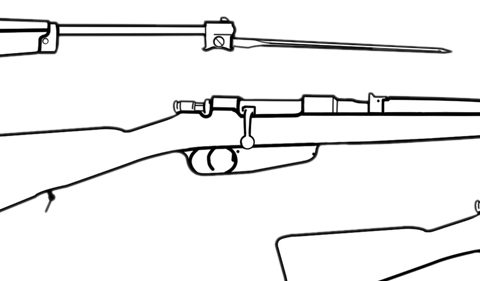
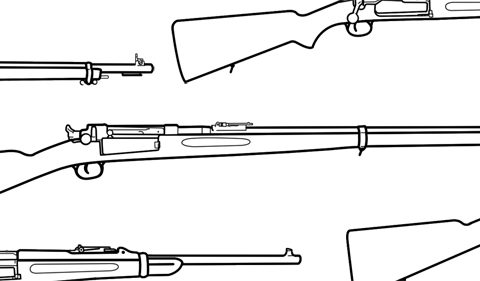
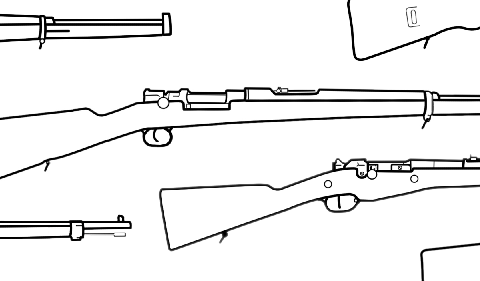
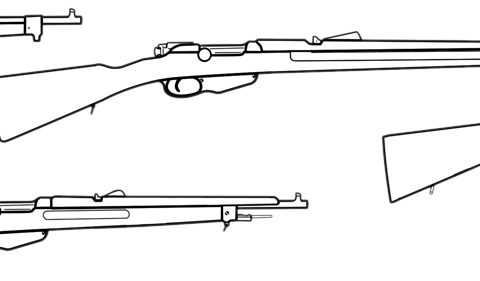
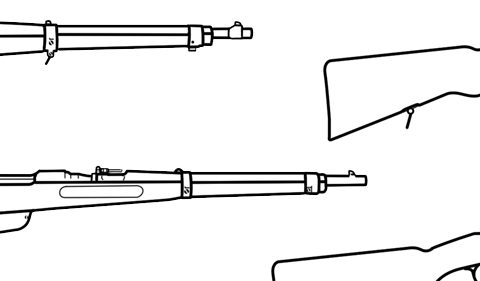
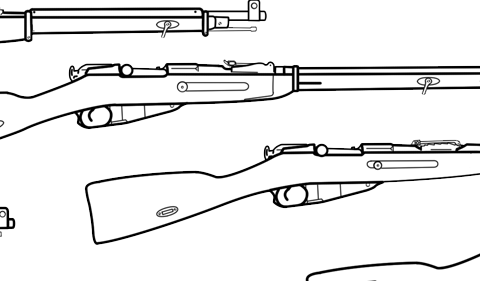
Gentlemen, I’ve read your article on Chassepot rifle modifications and I’ve found that mine is different in some details than those from the article; the oal is the same that the french cavalry carbines 46.3″, also the barrel has the same length, 27.6″ but it has a paper cartridge, the rear sling swivel still remains at the rear of the buttstock, it doesn’t fit a bayonet and the main difference is that it have a subnose cap identical to the german modified carbine! I’ m sure that it is not an artisan modification because the subnose cap is an industrial product not a hand made one. If you are interested I could send you some pitures of it. Regards, Alfredo.
Thank you for a genuine public service. Now we can tell one Chassepot and Gras from another.